By Dave Hallock
Howard Stafford is a life-long resident of Rockport. He is intimately familiar with our valley and the life of the Skagit River here. Howard owns and operates H. O. Stafford Trucking and Excavation, and he’s served our community for over forty years as a member of the Rockport volunteer fire department. Howard is one of three residents of the Martin Road neighborhood who are participating on a new stakeholder advisory committee for the Barnaby Reach project. Howard and I got together over coffee to hear his views about the proposed project.
Dave Hallock: Howard, your family goes way back here in Rockport.
Howard Stafford: Yes, my grandma came here in 1903. They didn’t live in Rockport at the time but they’ve been in the upper valley that long. Then they settled here on Martin Road. They had a little over sixty acres here, where we have farmed and worked here and made a living. There are now houses on most of that land, and with our daughter, son-in-law and grandchildren, we are fifth generation on the Martin Road.
DH: The Skagit River System Cooperative (SRSC) together with the Washington Department of Fish and Wildlife (WDFW), The Nature Conservancy (TNC) and Seattle City Light (SCL) have been working on a salmon habitat project in the Barnaby Reach area upstream of Rockport. When did you learn about the project?
HS: We had heard about the project a couple of years ago but didn’t learn about any of the details until earlier this year at a meeting in Rockport. It just came out of the blue. I guess they had had meetings before, but the community didn’t know anything about it until the meeting earlier this year. That was the first meeting I attended and since then I’ve been involved, trying to share the history of the area and what I know about the river and Barnaby Slough.
DH: We’ve learned that the regional director of WDFW, the head of TNC and a senior executive of SCL all signed off on the most ambitious alternative selected by the SRSC — before they ever met with our community.
HS: Yes, we found that out at a meeting with Mr. Brocksmith of the Skagit Watershed Council in Mount Vernon. We found out that we were to have been some of the first people to be notified and it ended up that we were the last people notified.
DH: You’ve had a chance to look at the study they’ve put out. What do you think of that information?
HS: Well, my reaction to this Barnaby Reach Project is that I can’t see and I don’t think anybody really can see or know how this will affect the river and the land surrounding the project. The Barnaby Slough is a natural habitat for fish. The fish come in and spawn there. They have for years. It’s always been a big natural habitat. In fact, one of the biologists we met with — he works for Seattle City Light — told me that it’s the biggest natural habitat still left on the Skagit River today.
I think they are just playing with fire, because they don’t know what the outcome of this will be. They say it’s going to help the fish, but the proof is not there and it will not be in this lifetime. Their plan to turn the Skagit River into the Barnaby Slough is going to put more water into the adjoining area which will in turn threaten Martin Road and the residents living there. This land is very important to me and that is why I’m involved in this project.
DH: Is the big channel they’d like to cut from the Skagit River into the Barnaby Slough your biggest concern about the project?
HS: Yes it is because there is no way to control the water flow once they cut that channel. They are saying that they are going to put in thirty percent flow from the river, but there is nothing to control that. So, once you cut a channel into Barnaby Slough and the river starts running there, it could just go wild. I don’t think they know what it’s going to do. And, we don’t know what it’s going to do. The people on Martin Road feel that we are being threatened by that.
DH: So, the feelings you are sharing with me are held by lots of people here?
HS: Yes they are. We have a list of people who feel this way. It’s more or less the Martin Road community. There are people who make a living here, for example Anne Schwartz who has an organic farm.
DH: And the majority of the people feel the way you do?
HS: Yes they do. I think that is why I was asked to represent them to the project partners.
DH: You’ve seen the rivers behave differently over the years. What can you share with us about that?
HS: Well, the Skagit River is a pretty wild river. Even with the dams on it, at certain times I’ve seen water on the Martin Road in the low area near Hornbeck’s. But in the last few floods the river has come closer to us. We have a place where there used to be a public fishing area and the river has taken it out and is coming closer to Martin Road.
The Skagit River has a lot of big tributaries that feed into it, including the Cascade River, Illabot Creek, Bacon Creek, and Diobsud Creek. All these contribute a lot of water which they cannot control with the dams. So, it just depends on what kind of weather we get and what kind of water we get. Through the years the flooding has gotten worse on Martin Road than normal, and I think with this channel turning the water in to Barnaby Slough, they are just adding to the problem more.
DH: SRSC has hired a consultant to do some computer modeling, work intended to support approval of their project, what do you think about that?
HS: I’ve seen that model. They keep saying that they are working on another model, but my opinion of the models they are doing is that you can’t compare that with what really happens on the Skagit River. You cannot predict what a wild river is going to do.
DH: One justification for this project expressed by managers of the Skagit River System Cooperative is that humans straightened Skagit River, implying then that’s okay to put it back where nature had it. What do you know about how the Skagit actually changed?
HS: As far as I know humans never straightened the river. What I know is what my grandmother told our family. When my grandmother came to this state they lived at Swift Creek, which is on the north side of the river across from the Barnaby Slough. At the time that they lived there, the river was going through Barnaby Slough. She told me that in one night during a big flood, the river straightened out and it almost took their house out. That’s when they packed up and moved near the Cascade on what is now the Clark Road.
DH: What year would that have been?
HS: It is thought to have been the 1909 flood.
DH: So, Howard, how do you feel about fish habitat?
HS: I feel that we need to use what we have. We have the natural habitat already, we just need to leave things alone and leave it up to the natural way the Creator intended it. There is nothing that says when they are done that this is going to work and I think they have jobs to do, but this is not the way it should be done.
DH: What would make you comfortable with the project?
HS: To make me comfortable with the project would be to just open up the culverts that are plugged and let the water flow that is there naturally. The beaver dams need to be controlled. The fish are coming in the slough anyway and it would give them more water and spawning habitat. It would be a natural habitat. Work with that and see what happens. That is what we really want.
DH: How do you feel about removing all the hatchery structure there? Would you be okay with them removing that?
HS: What they’ve got there are some ponds, and they’ve put some riprap in there to hold things together. To hold the river out is what a lot of it is. I think they’ve taken some of it out already and have not said anything to anybody, according to what some people have said. The fisheries are doing it but the Sauk and Suiattle tribes are also involved. I think they should clean up what is there and the fish will be better able to have passage through there.
DH: SRSC has met with the community a few times and they’ve set up a stakeholder advisory committee. They hired a consultant to come out and talk to people. Do you feel that your concerns about all this are actually being heard?
HS: As a community we wanted to be on the stakeholder committee. Christie Fairchild, Russ Dalton and myself were asked to be on an advisory committee. We just wanted to be heard and have our questions answered. SRSC has hired a consultant to address community members questions and concerns. We have met with her and let her know how we felt and she has spoken to almost all residents. We have attended one stakeholder advisory meeting and our questions were brought up. What is really sad is that we’ve never had one of our questions answered.
For example, we’ve had promises that more research is going to be done on False Lucas Slough. That was one of the things I brought up at the first meeting that they should consider. They said they were going to get with me and some others and go over things. That has never happened. It’s all fine and good to be on a committee, but I feel that we’ve given our input, but we haven’t had any of our questions answered. I think they’re just going forward with what they want to do and that they’ve just been trying to pacify us.
DH: If you had the leaders of the WDFW, TNC and SCL in a room with you to talk about this, what would you say to them? What would you like them to hear?
HS: I’d like to tell them more or less what I’m saying. I don’t feel that we need to be messing with Mother Nature. We have the biggest natural habitat still left on the Skagit River, and there is no proof that if they do this project — if they get this through and I hope they don’t — that it is even going to work. And, by turning the Skagit River into Barnaby Slough they have no control over how much water goes through. They will have no control over logjams or other things that could happen. I feel that they are just messing with peoples’ lives and homes.
What I really can’t understand is how a government agencies like WDFW or SCL or an organization like TNC can take and put people on Martin Road and their homes, businesses and possibly our lives in danger by doing something like this.
DH: I’ve heard you say that there is a good alternative to doing a project immediately upstream of our neighborhood. What ideas have you thought of?
HS: The first one that comes to mind is at milepost 99 where the Washington eddy and the river moved over. It moved over and that’s why we are having the problems on Martin Road at the public fishing location now. It’s a big slough now, kind of like Barnaby Slough. It still has water running through it. It has beaver dams in it. It’s a pretty big area. I would like to see them try something there. Open that up and make it more open to the fish. Use that as a project. There are no households there. It wouldn’t endanger anybody. There are no landowners there to be hurt. The river has been there before and it went away. Kind of like what they are wanting to do with the Barnaby Slough, but over there they could put part of the river back and never hurt anybody.
DH: Is there anything else that you’d like the people in our valley, outside of Rockport, to know about this?
HS: I think everybody should know about this in the valley. What they’re doing should be publicized, the dangers they’re bringing to our homes. There are a lot of people who have no idea this is going on up here.
DH: Why should they know about it?
HS: Because we are working with unknowns, for one thing. But they are putting fish before people. When they start threatening our homes and livelihoods, people should be aware of what’s really going on.
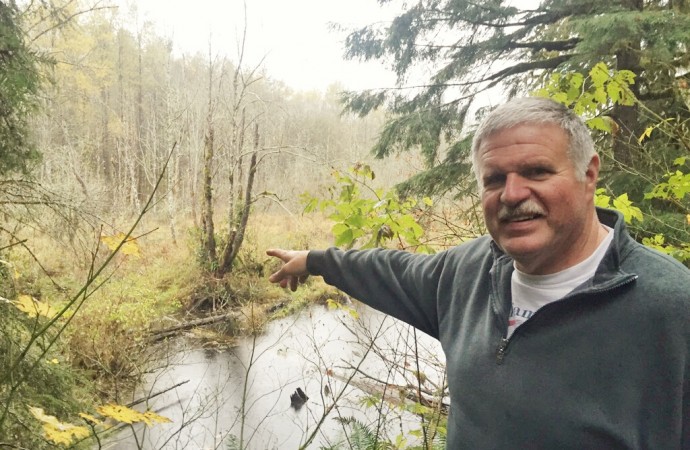
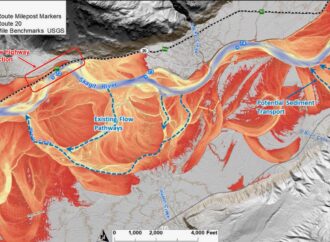
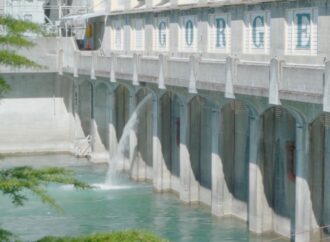

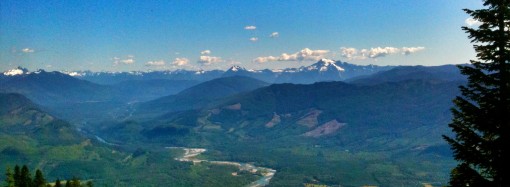
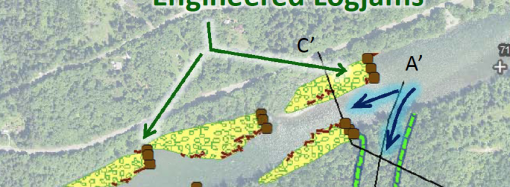
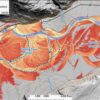

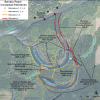
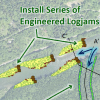
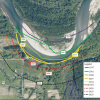
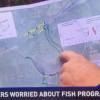
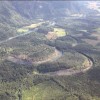
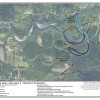
Leave a Comment
Your email address will not be published. Required fields are marked with *